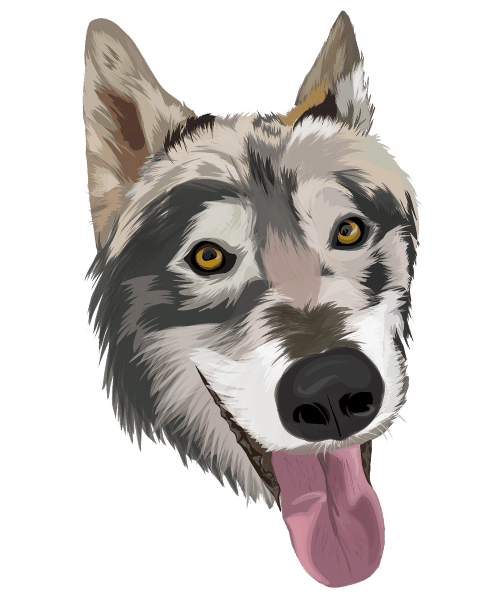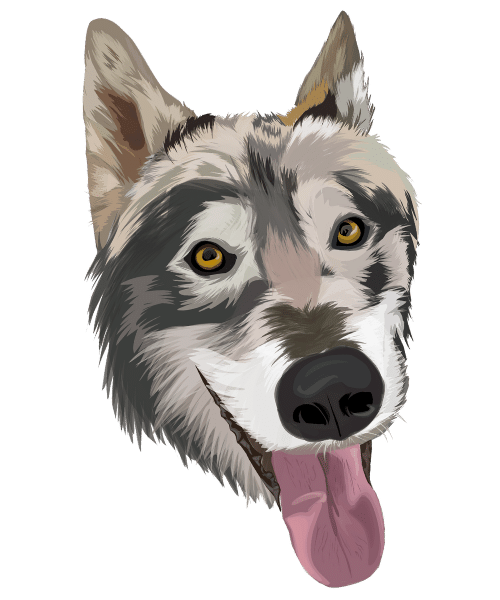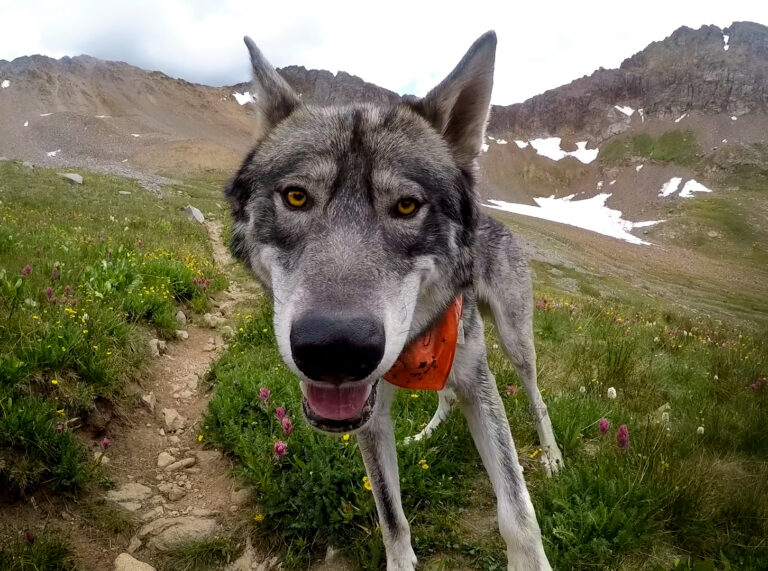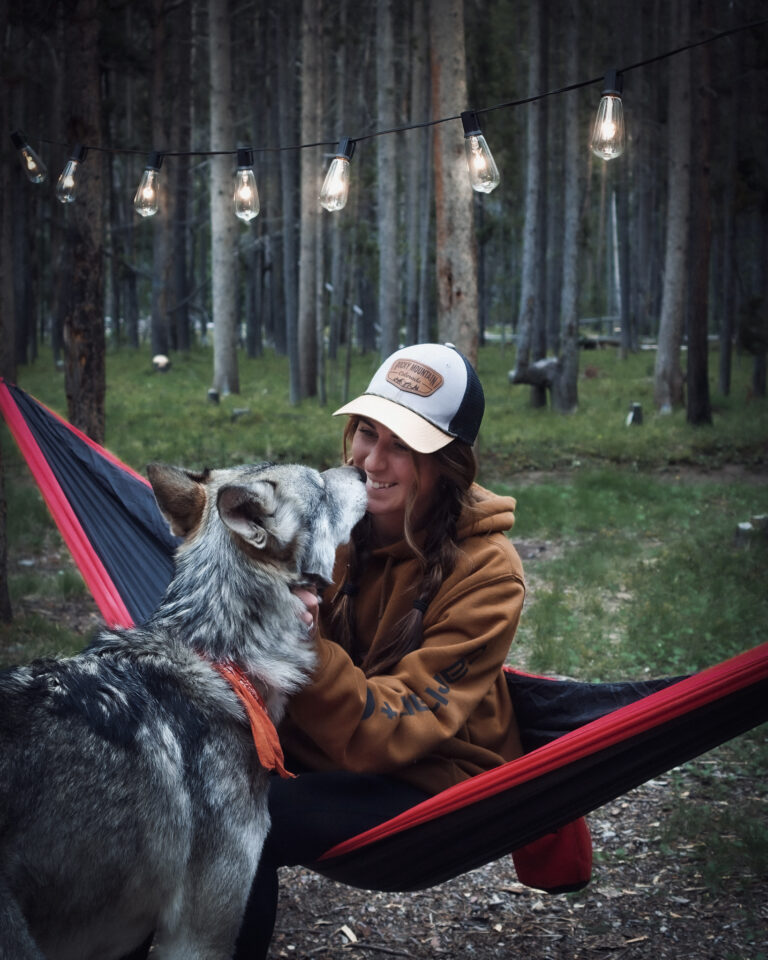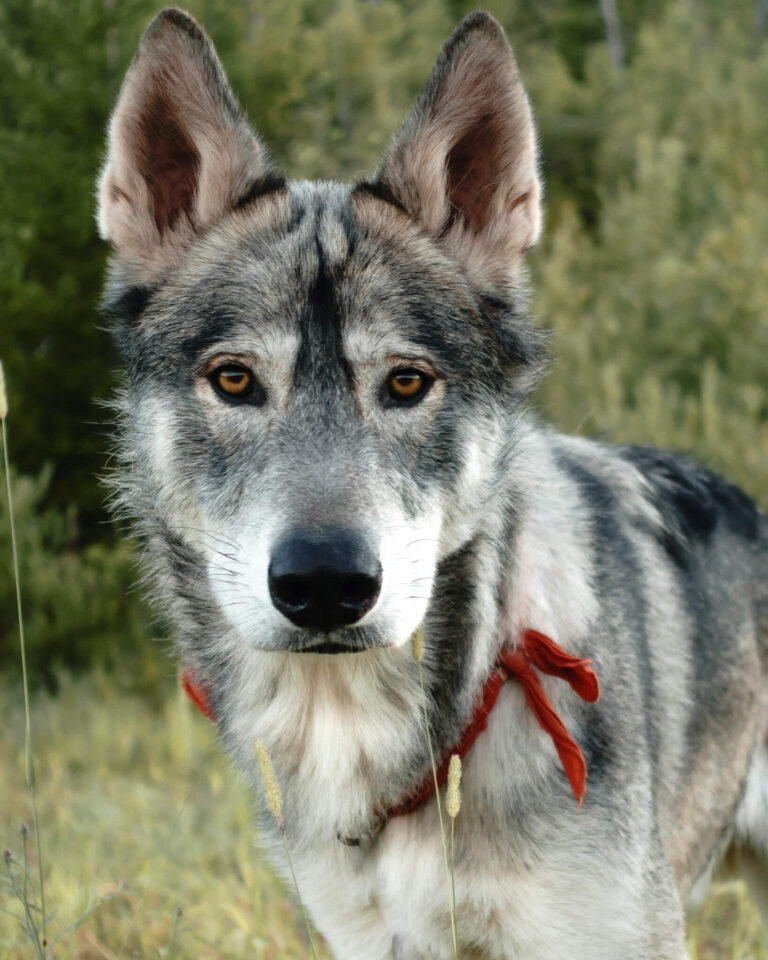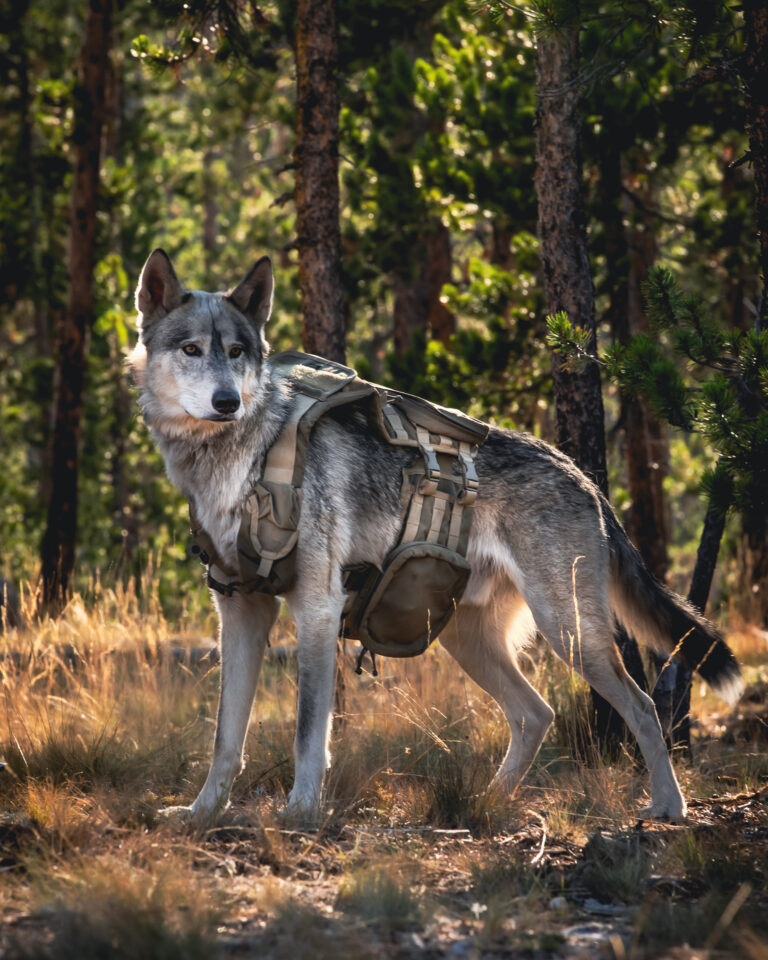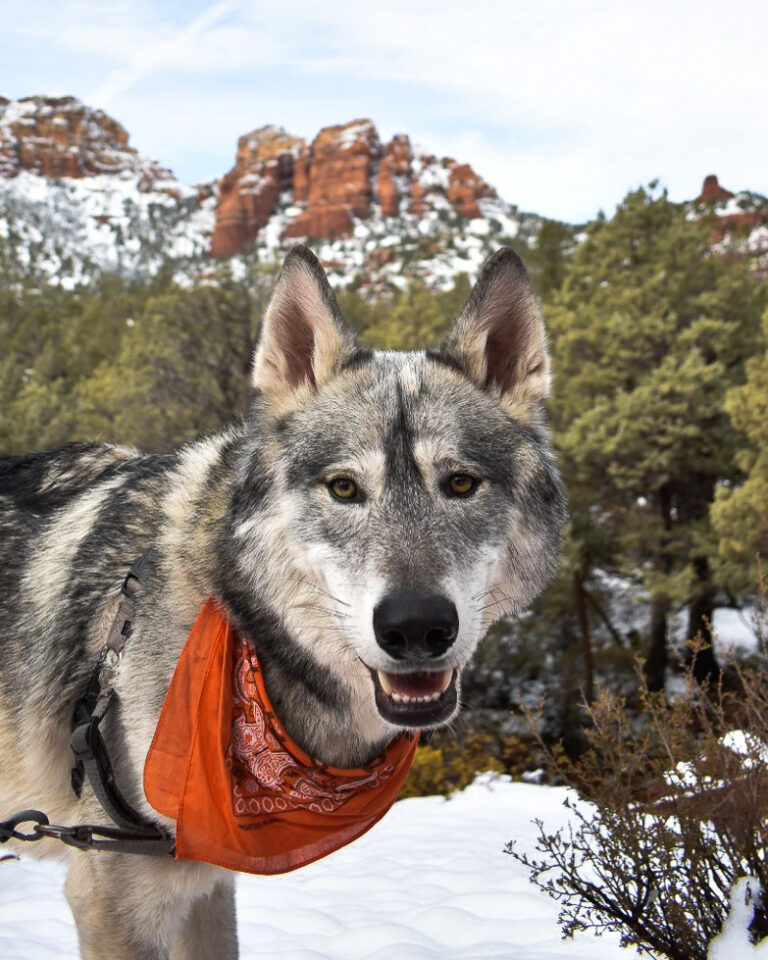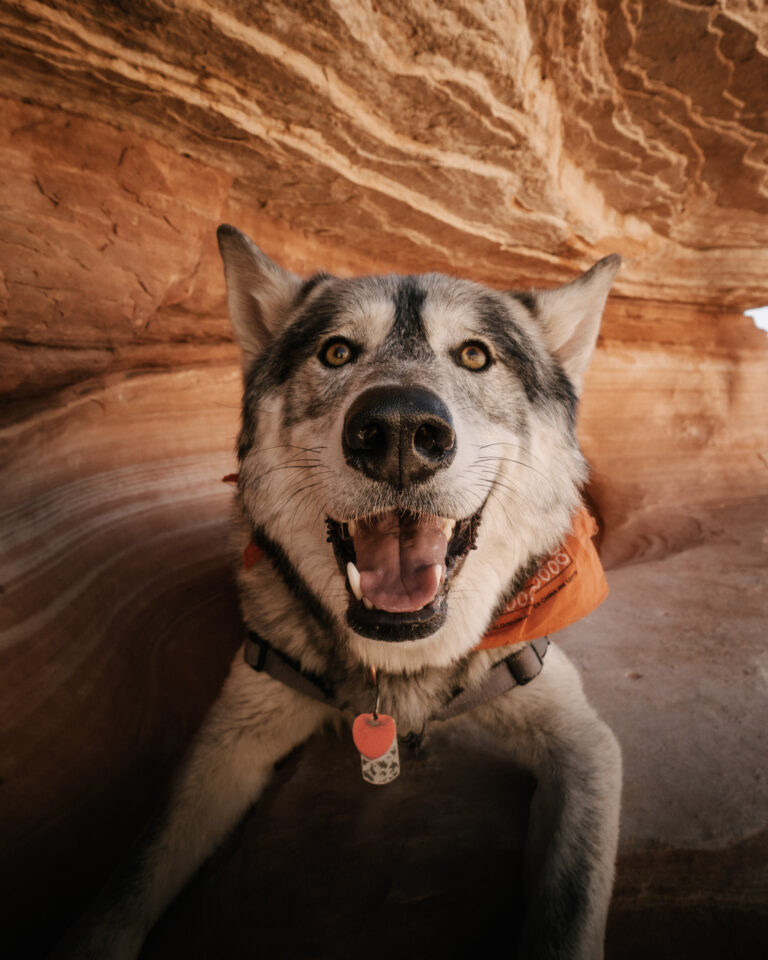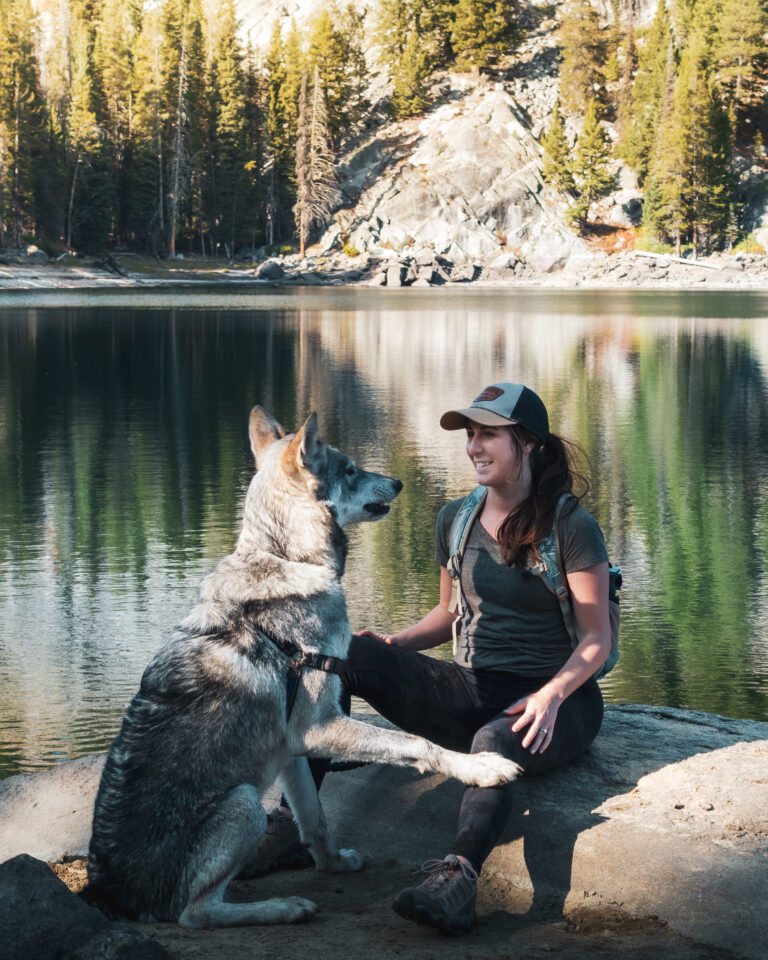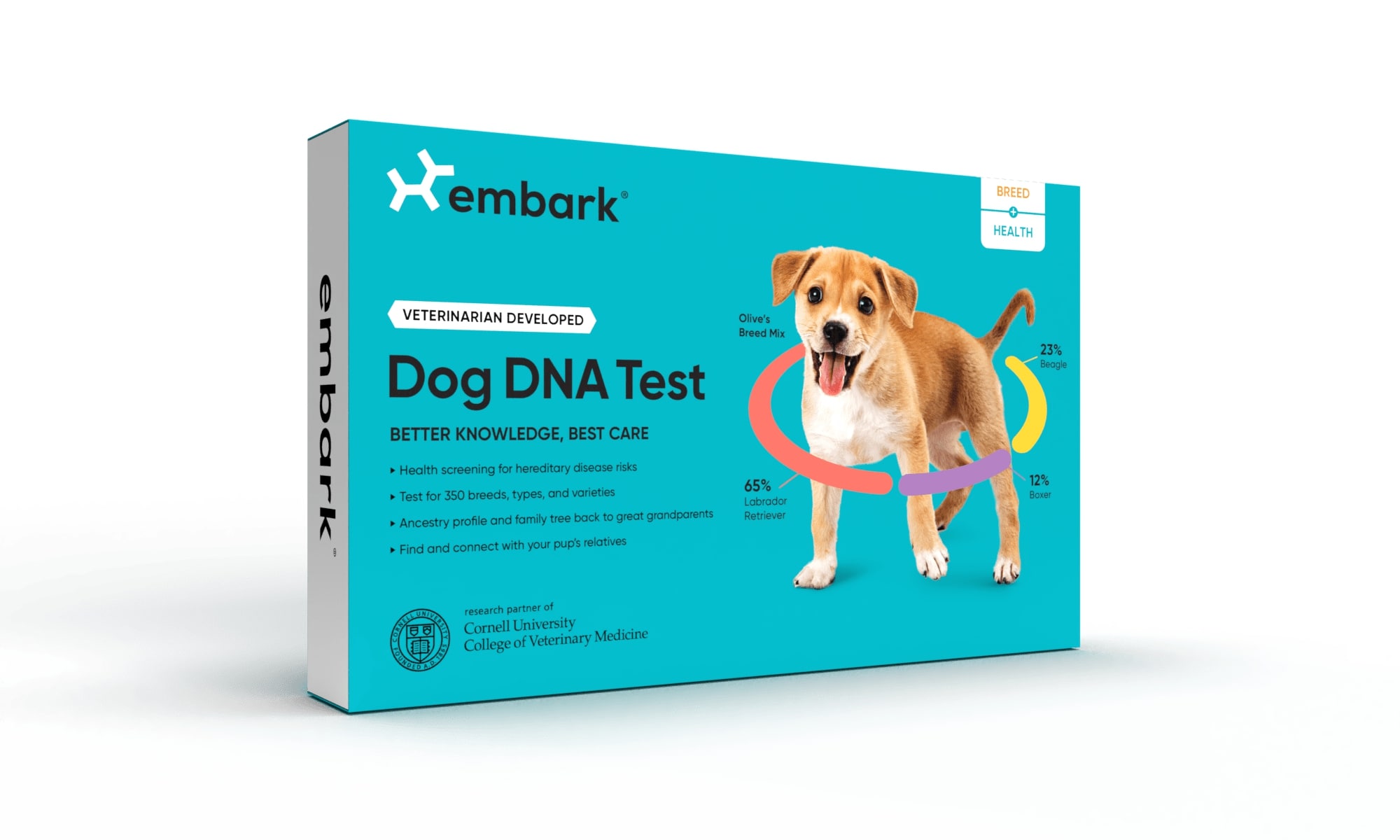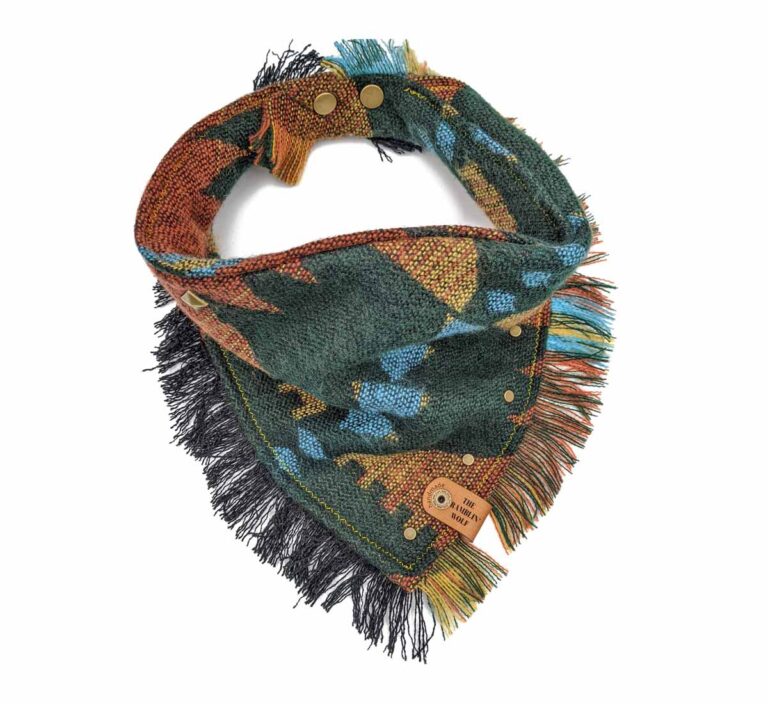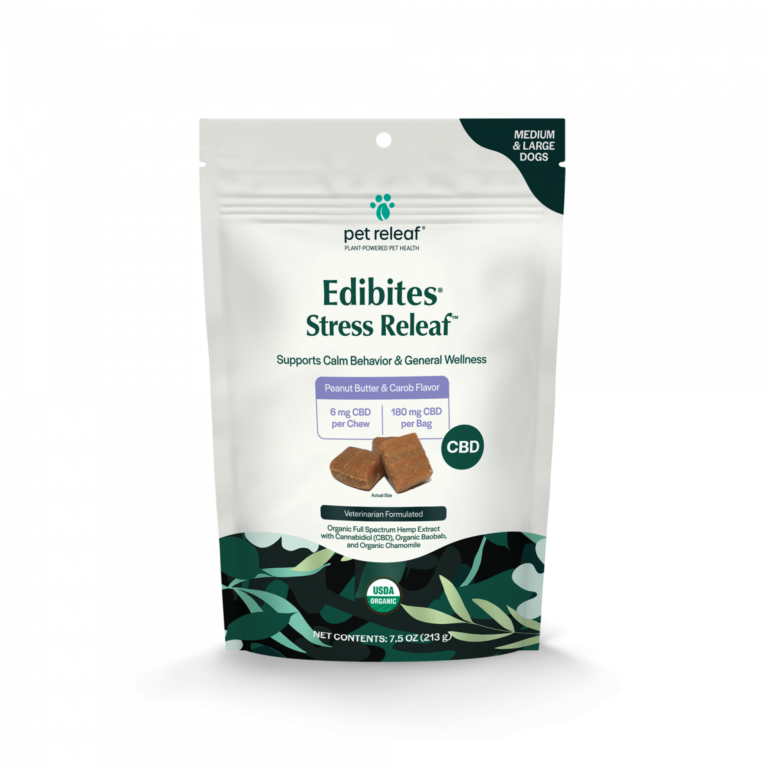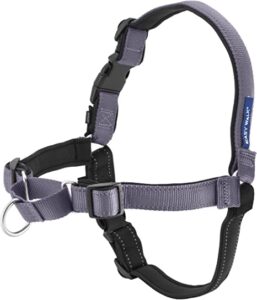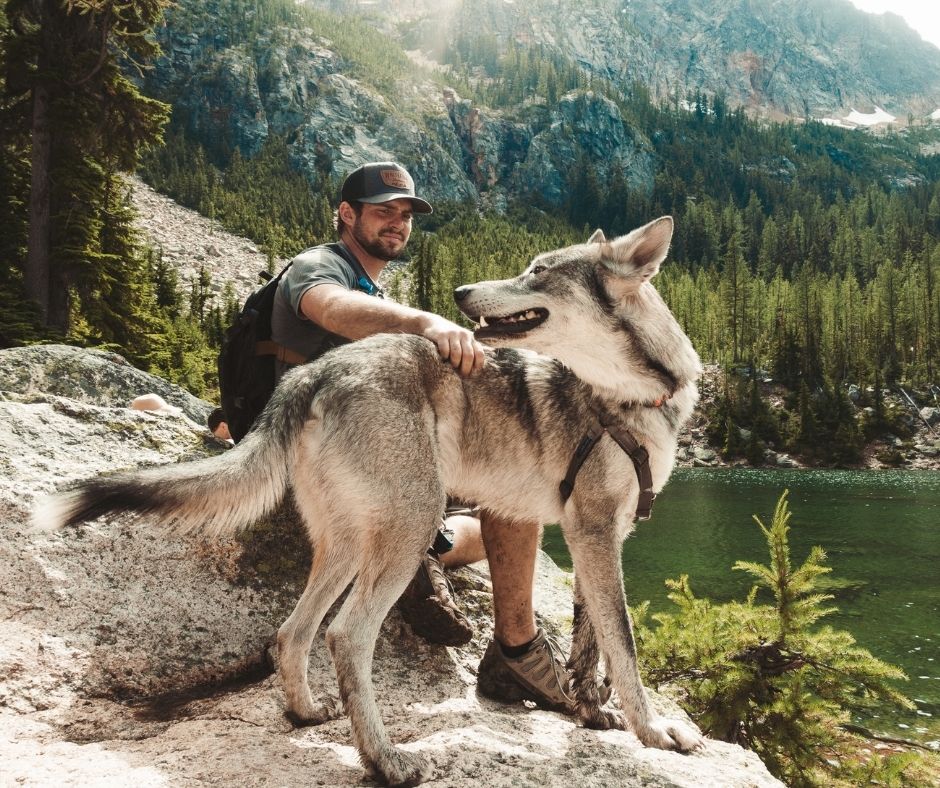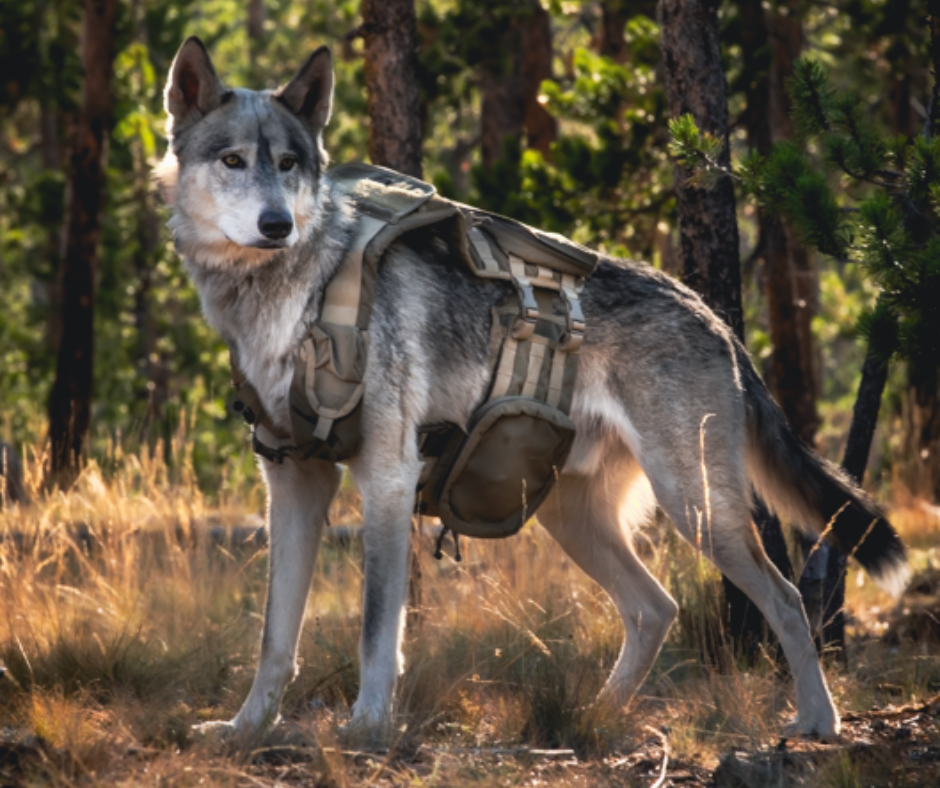What is a Wolf Dog? The Journey from Wild to Domesticated
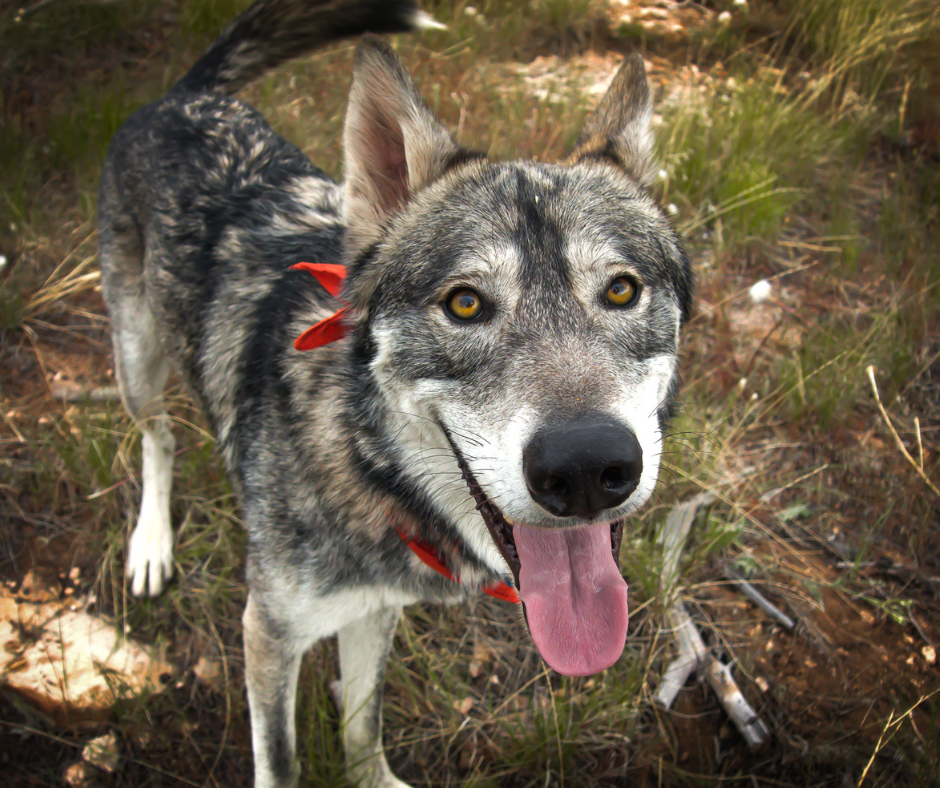
Have you ever wondered what it would be like to have a furry friend that’s part wolf and part dog?
These unique creatures have become increasingly popular among pet owners, but what exactly are they like as pets?
As owners of a four-year-old mid-content wolf dog named Cruze, we can tell you that they are extra-loving, intelligent, and playful four-legged friends. However, owning a wolf dog is also a big responsibility.
In this blog post, we’ll give you a glimpse into what it’s like to have a wolf dog as a pet. We’ll cover everything you need to know about wolf dogs, from their history and genetics to their behavior and characteristics.
We’ll also give you tips on what to feed them, the fencing requirements you’ll need to keep them safe, and important legal information you should be aware of.
Finally, I will provide suggestions on items that we purchased to ensure the safety and entertainment of Cruze, while also helping us maintain our sanity.
Table of Contents
ToggleHistory Of Wolf Dogs
The history of wolf dogs dates back to thousands of years ago when early humans began domesticating wolves to help with hunting and protection.
The first documented breeding of wolf dogs occurred in the 18th century when a British man named General John Burgoyne crossed his dogs with wolves in an attempt to create a more powerful and resilient hunting dog.
However, it wasn’t until the mid-20th century that the breeding of wolf dogs became more widespread and popular among dog enthusiasts.
With the mixing of genes over several generations, most wolf mixed dogs are more dog than wolf and have been selectively bred to have certain behavioral characteristics and physical appearances.
What is a Wolf Dog?
A wolf dog is a unique “hybrid” that combines the loyalty and affection of a dog with the wild instincts and rugged beauty of a wolf. They’re a little bit wild, a little bit tame, and a whole lot of fun.
So, what exactly is a wolf dog?
A wolf dog is the multi-generational selective breeding of a wolf dog to another wolf dog OR wolf dog to a domesitc dog.
The vast majority of wolf dogs are actually 2, 3, or 4 generations removed from a pure wolf. In other words, their lineage includes one or more dogs between the pure wolf and the wolf dog.
Generations of descendants crossing between wolves and dogs produce offspring that are successively less wolf-like in appearance and behavior.
For example, many breeders will crossbreed a wolf dog with a domestic dog, often using a breed like a German Shepherd or Husky.
However, it’s important to note that not all dogs with wolf-like features are actually wolf dogs. Only those with a certain percentage of wolf DNA and specific ancestry qualify.
Learn more about wolf dogs vs wolf hybrids.
Wolf Dog Ancestry
To understand the ancestry of a wolf dog, we need to first look at something called the “Filial Generation Number.” This number (F1 – F5) refers to the number of generations between a wolf and a domestic dog in the lineage of a particular hybrid offspring.
For example, a wolf and a domestic dog mating produce a first-generation hybrid known as an F1. If two F1 hybrids are then bred, their offspring would be considered F2, and so on.
Interestingly, some wolf dogs can still have a wild-like appearance several generations removed from the original cross.
But how do we measure the percentage of wolf DNA in a wolf dog? We look at something called “content.” This refers to the amount of purebred wolf genes present in an animal’s genealogy or DNA test results.
Wolf Dog “Content” Explained
In order for us to understand how much “wolf” any particular animal has in its lineage, we need to look at something called “content,” which is simply the percentage of purebred wolf genes and dog genes present within an animal’s DNA test results. The higher the percentage means, the more purebred wolf genes an animal has.
While the exact percentage varies, most wolf dogs fall into one of three categories based on the amount of wolf DNA they have:
High-Content Wolf Dogs
Wolfdogs that are categorized as “high-content” have wolf DNA that exceeds 80%. As the percentage of wolf DNA increases, these dogs tend to resemble wolves more and more, both in appearance and behavior.
When their wolf DNA reaches 95%, the physical and behavioral traits of these dogs become almost identical to those of wolves.
Mid-Content Wolf Dogs
Wolf dogs that are considered mid-content hybrids typically have a genetic makeup that includes between 50% and 80% wolf DNA.
The physical and behavioral traits of these dogs can vary significantly. Some mid-content wolf dogs may appear more dog-like, while others may exhibit more wolf-like characteristics.
While the percentage of wolf DNA can provide some insight into the dog’s traits, it’s not always an accurate predictor of individual characteristics.
Therefore, it’s important to approach each mid-content wolf dog as a unique individual with its own set of traits and characteristics.
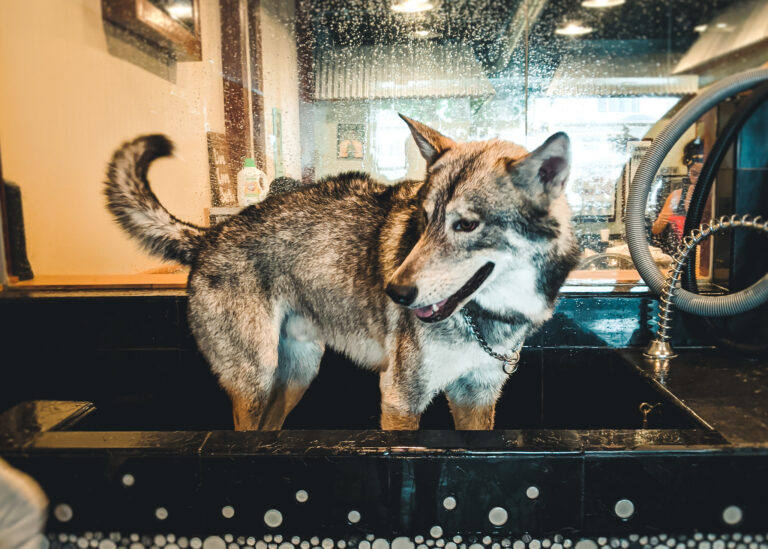
Low-Content Wolf Dogs
Typically, low-content wolf dogs have wolf DNA that accounts for 50% or less of their genetic makeup.
This implies that their behavior and temperament generally align more with domestic dogs, despite inheriting some physical traits from their wolf ancestors.
While it can be helpful to categorize these dogs based on their wolf heritage, it’s important to remember that each dog is unique and has its own personality.
Also, the amount of wolf DNA they have doesn’t necessarily determine their behavior.
Characteristics of wolf dogs
Wolf dog behavior can be quite different from that of regular domestic dogs. So, what are some of the key characteristics of wolf dogs? Let’s take a closer look:
Pack mentality: Wolf dogs are social animals that thrive in a pack environment. They’re fiercely loyal to their human family and will protect them at all costs. However, they can also be prone to separation anxiety if left alone for extended periods of time.
High Energy levels: Wolf dogs are active creatures that require plenty of exercise and mental stimulation. They love to run, hike, and play, and thrive in a large, outdoor space where they can explore and expend their energy.
Highly Intelligent: Wolfdogs are very intelligent animals, and they should be treated as such! It’s important to recognize their intelligence and provide opportunities for them to use their minds, such as puzzle toys or games of hide-and-seek. Without enough mental stimulation, they can become bored or even develop destructive behaviors.
Heightened Alertness: wolf dogs are often more alert and aware of their surroundings than regular domestic dogs. For example, wolf dogs may be more reactive to sounds, smells, or movements in their environment.
Increased Independence: Wolf dogs may be more prone to wandering off or exploring their environment on their own, rather than sticking close to their owners. They may also be less likely to follow commands or obey rules, as they may feel more inclined to follow their own instincts instead.
Strong Prey Drive: Wolf dogs often exhibit a strong prey drive, which is a behavior that can be traced back to their wolf ancestry as wolves are natural hunters and have a strong instinct to chase and catch prey. As a result, wolf dogs may be more prone to exhibiting hunting behaviors, such as stalking, chasing, and catching small animals.
Timid/Shy: Shy by nature, wolf dogs can be difficult to socialize. When wolf puppies are not socialized early in life, they can remain skittish to strangers all their lives. They need lots of outdoor time and human interaction in order to thrive socially.
Separation Anxiety: Wolf dogs can experience significant separation anxiety, which can result in destructive behavior when left alone. It’s important to remember that they don’t understand time the way we do and might think you’re gone forever, leading to panic.
Wolf Dog Behavior
In this section, we’ll take a closer look at the behaviors and traits exhibited by each level of content, giving you a better understanding of what it takes to care for wolf dogs.
High-Content Wolf Dogs
What really sets them apart is their sensitivity to their environment, their stubbornness and their autonomous nature making them less likely to want to please their humans such as we find with domestic breeds.
High contents also typically display a strong neophobia when something unknown or unusual is presented. Their communication also tends to be vocalized through growling as opposed to relying on eye contact or body language—common methods of communication seen in domesticated breeds.
Additionally, high content Wolf dogs are often prone to claustrophobia so any situations that confine them should be handled with special care.
High-content Wolves dogs are incredibly intelligent and strong-willed animals. They require a lot of time and patience in order to be trained properly—including reinforcing positive behaviors, socialization, obedience and self-control. Properly harnessing their energy can take a lot of hard work, but when done correctly it can result in remarkable abilities.
Not only do these animals come with instinctual abilities that make for fantastic companions if raised properly, but they are also very loyal.
Mid-Content Wolf Dogs
Mid-content wolf dogs possess a unique combination of traits that sets them apart from high-content wolf dogs and domesticated canine breeds. They demonstrate a level of intensity and sensitivity that falls somewhere between the two, making them capable of connecting with humans while still retaining wild characteristics.
In order to ensure they grow up to become balanced and well-adjusted family companions, mid-content wolf dogs require socialization and education, though their temperament may often prove more docile and collaborative compared to high-content wolf dogs.
Mid Content wolf dogs will need an owner that will actively work on bonding with them and developing a level of trust. To do this successfully, it is important to focus on mitigating any shyness these animals may possess, controlling any predatory behaviors, and building a routine that can help avoid the onset of separation anxiety.
In addition to committing to establishing a trusting bond with the animal, it is absolutely critical that outdoor enclosures or escape-proof yards (equipped with lean-ins and anti-digging) be established to protect both themselves and their neighbors in the local area. This same advice should be followed when considering adopting any high-content wolf dogs.
Low-Content Wolf Dogs
Low-content wolf dogs possess a unique blend of traits from both domestic dogs and wolves. They have a lower percentage of wolf genetics than high or mid-content wolf dogs, typically less than 25%, but still retain some of the wild characteristics of their wolf ancestors.
While low-content wolf dogs are generally more adaptable and sociable than their high or mid-content counterparts, they can still pose challenges for those who are used to traditional dog breeds.
They may have a strong prey drive and require a lot of exercise and stimulation to keep them happy and healthy. Additionally, they may be more independent and less obedient than other breeds, making proper training and socialization all the more important.
How Wolf Dogs Communicate
When you have a wolf dog companion, you quickly realize that they have a very distinct and unique way of communicating.
Our wolf dog, for example, uses body language more than any other dog we’ve had before. He often communicates his emotions through subtle movements and gestures that we’ve learned to interpret over time.
In this section, we will explore the different ways that wolf dogs communicate and how to interpret their cues to build a strong relationship with your wolf dog companion.
Vocalizations: Wolf dogs can produce a wide range of vocalizations, including howling, barking, growling, and whining. Howling is often used as a form of long-distance communication, while barking and growling can signal their discomfort or displeasure in a given situation.
Body language: Like domestic dogs, wolf dogs use body language to communicate their moods and intentions. This can include things like tail wagging, ear positioning, and facial expressions.
Scent marking: Wolf dogs, like wolves, have a highly developed sense of smell and use scent marking as a form of communication. This can involve urinating on objects or rubbing against them to leave their scent.
Posturing: Wolf dogs may also use posturing to communicate dominance or submission. This can include standing tall and erect to indicate dominance, or crouching down and tucking their tail between their legs to indicate submission.
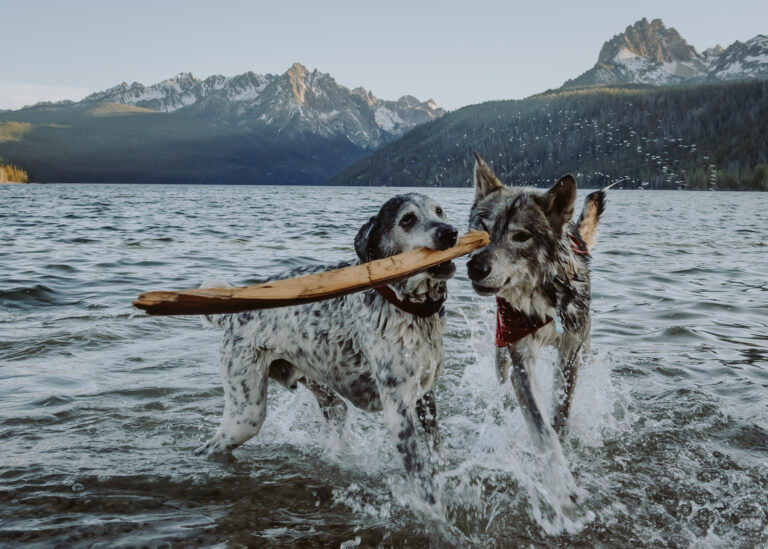
How wolf dogs differ from wolves and dogs
While wolf dogs share some traits with both wolves and dogs, they’re also a unique hybrid that’s different in many ways. Let’s take a closer look at how wolf dogs differ from their wild and domestic counterparts:
Genetic makeup: Wolf dogs are a hybrid of wolves and dogs, with varying percentages of each breed in their genetic makeup. Purebred wolves, on the other hand, have no domestic dog DNA, while traditional domestic dogs have little to no wolf DNA.
Physical appearance: Wolf dogs can range in appearance depending on their breed and the percentage of wolf DNA they have. They may have a thicker coat, more pointed ears, and sharper teeth than traditional dogs. However, they also tend to have less bulky builds, pointier ears, and shorter snouts than purebred wolves.
Behavior: Wolf dogs have a mix of wild and domestic traits when it comes to behavior. They may be more independent and stubborn than traditional dogs, but also more loyal and protective of their human family. They can also be more prone to predatory behavior than domestic dogs, but less so than purebred wolves.
Training: Wolf dogs can be trained to obey basic commands and perform tasks, but may require more patience and consistency than traditional dogs. Purebred wolves, on the other hand, are generally not trainable as they are wild animals with their own instincts and behaviors.
Caring for Wolf Dogs
Little did we know when we welcomed Cruze into our home, that owning a wolf dog would be a whole different ball game when it comes to their care.
It wasn’t until later that we realized these majestic creatures have unique needs that are quite different from regular domesticated dogs.
It took some time, effort, and research to understand how to properly care for our wolf dog.
Diet and Nutrition
Since our wolf dog, Cruze, is quite active and adventurous, we learned that a diet high in protein is essential to keep up with their energy levels.
A raw diet is the best way to ensure that your wolf dog gets all the nutrients they need. Raw diets typically consist of uncooked ingredients from either livestock or wild animals, helping to maintain their lean and muscular physique, as well as providing the energy they need to stay active.
For meat, try chicken (carcasses, backs, necks, legs, wings, and organs), beef (any cut works, including liver and heart), and even turkey (ground, necks, wings, and more!). Mix it up with some deer, elk, lamb, goat, or rabbit, and don’t forget the tasty bones, tendons, and knee caps for good teeth-cleaning.
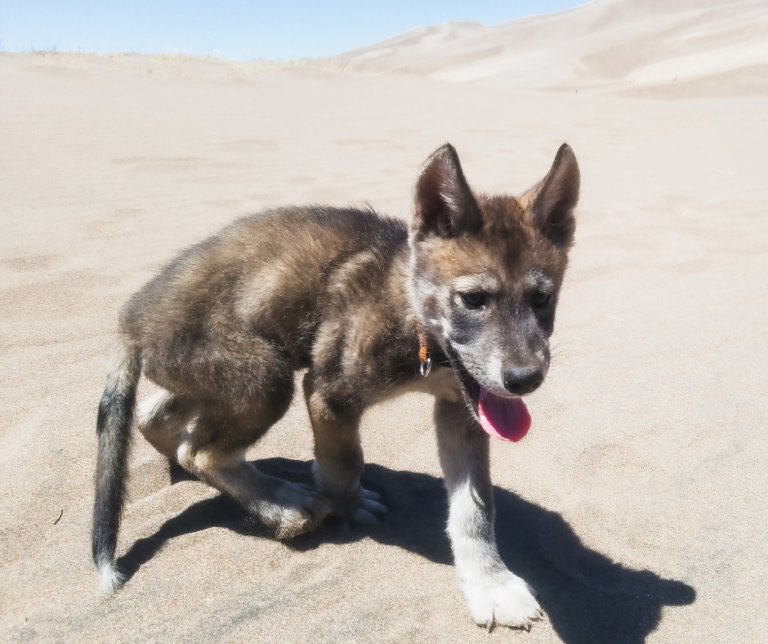
If you are interested in a raw food subscription service to have your wolf dog’s meals delivered on a regular basis, we recommend Raw Paws Dog Food Delivery
Raw Paws has an extensive range of raw, natural, and organic dog food, so you can rest assured that your dog is receiving only the highest quality ingredients, free from any harmful additives or preservatives.
Fencing Requirements
Since our wolf dog, Cruze, loves to explore and play, we have found it essential to provide him with plenty of space to roam freely.
While some low and mid-content wolfdogs can live within a standard-sized fence without escaping, it’s crucial to recognize that some mid-content and all high-content wolf dogs require a more secure enclosure.
To ensure your wolf dogs’ safety and prevent escape, owners should install an 8ft tall fence that’s escape-proof, complete with lean-ins and anti-digging wire. It’s also important to note that wolf dogs require a large area to roam freely, typically one half to a full acre for two wolfdogs.
Owning a wolf dog requires a significant commitment to their unique needs, and providing them with a secure and spacious environment is just one aspect of their care.
GPS Collar
We’ve found that a GPS collar is especially important for our wolf dog, Cruze, who has a tendency to wander off. Despite our best efforts to provide plenty of space for exploration, Cruze sometimes ventures beyond the boundaries we’ve set, putting him at risk of getting lost or injured.
Thanks to the Link My Pet GPS collar, we’ve been able to locate Cruze quickly and bring them back to safety. We also receive alerts when Cruze leaves a designated area, allowing us to react promptly and prevent any potential dangers.
Legal Issues with Wolf Dogs
Did you know that the laws and regulations surrounding wolf dogs vary widely between different states and even cities? It’s true!
In some states, for instance, wolf dogs are classified as wild or exotic animals, which means that special permits or licenses may be required to own them. Additionally, certain areas have specific rules around wolf dog ownership and breeding, such as restrictions on the percentage of wolf genes or containment requirements.
If you are thinking about having a wolf dog as a companion, don’t let these laws catch you by surprise!
We have blog post entirely dedicated to the topic of wolf dog laws and regulations, providing you with all the information you need to stay informed and be a responsible owner.
Is your Dog Really a Wolf Dog?
Looking to uncover the secrets hidden in your furry friend’s DNA? Embark’s ancestry test is just what you need.
With a simple and hassle-free process, all you need to do is collect a saliva sample from your dog using the kit provided by Embark, send it back to them, and sit tight for just two weeks to receive your results.
What sets Embark’s test apart is its reliance on the most comprehensive database of canine DNA worldwide, which includes over 250 breeds. This translates to results that are accurate, scientifically-backed, and offer an unparalleled level of insight into your dog’s genetic makeup.
So why wait? Discover the mysteries of your dog’s ancestry with Embark’s easy and reliable DNA test today!
Volunteer At A Wolf Sanctuary
If you’re unsure about whether a wolf dog is the right pet for your family, we recommend volunteering at one of the many wolf sanctuaries in the US to learn more about these unique animals before making any decisions.
These sanctuaries are often overflowing with wild wolves, wolf dogs, and wolf hybrids, as many backyard breeders sell these animals to unprepared or unqualified buyers who are unable to provide proper care.
Unfortunately, thousands of wolf dog hybrids end up being euthanized each year due to a lack of space and resources for their care. To break this cycle, it’s important to educate potential buyers about the significant responsibility that comes with owning a wolf dog.
By promoting responsible ownership and discouraging backyard breeding, we can help ensure the welfare of these magnificent creatures for generations to come.
Wolf Dog Must-Haves
Owning a wolfdog means you need a whole arsenal of supplies to keep him safe and entertained, while allow us to maintain our sanity. This is a list of things I wish someone would have recommended to us:
Bandanas: Cruze loves to run free in the woods, but we understand the concerns of fellow hikers and dog owners who may mistake him for a threat. That’s why we came up with a solution to put a cute handmade bandana on him. This will ensure that everyone can see that Cruze is a friendly dog and can approach him without any worry. Plus, if you use the code CRUZE15 at checkout, you can get a 15% discount on your purchase.
Calming Chews: These calming chews are made with all-natural, organic ingredients and contain 5mg of CBD per bite, which helps to support calm behavior in dogs. We found that they helped to reduce Cruze’s anxiety during long car rides and made the experience more enjoyable for everyone.
No Pull Harness: This harness has been amazing for taking Cruze on our hikes and walks. He gets excited and will pull your arm off if you’re not careful. This harness prevents him from pulling so hard by redirecting him towards you when he pulls. Jake says it has made walking Cruze a whole lot easier.
Bully Chews: Highly recommend for any dog, but especially Wolfdogs in their puppy phase. Having bones and treats that keeps them preoccupied helps prevent them from chewing on your sofa, your shoes, carpet, etc.
Final thoughts—What is a Wolf Dog?
With all of Cruze’s beauty and charm comes a lot of responsibility.
Our wolf dog is an intelligent and independent animal. He has a kind soul and expresses exactly how he feels about someone he loves. And there is something quite special and wild about seeing him run free.
However, owning a wolf dog like Cruze is a big responsibility that requires dedication and commitment.
Owning a wolf dog is a privilege. Not everyone has the space, time, or resources to properly care for these animals. Owning a wolf dog is also a job. It requires patience and consistency. But, with proper care and attention, wolf dogs can make wonderful and loyal companions.
We ask that if you are considering a wolf dog as a pet, you take ownership seriously and provide a safe and healthy home for them.

